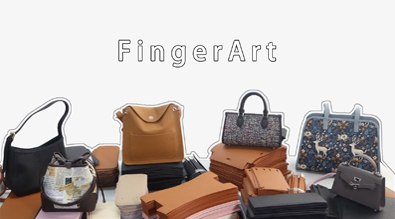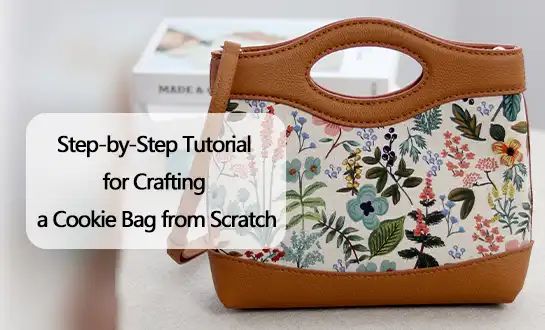How to Store and Protect Your Leather Bag Making Kit?
Your leather bag-making kit is more than just a collection of tools and materials—it's the gateway to countless hours of creative joy and the foundation for handcrafted treasures that will last a lifetime. Whether you've just unwrapped your first leather bag-making kit or you're a seasoned crafter with multiple projects in progress, proper storage and protection of these precious components ensures that every piece of full-grain leather, every brass rivet, and every specialized tool remains in pristine condition. Understanding how to preserve your investment not only extends the life of your materials but also guarantees that each crafting session begins with the same excitement and potential as the first. From climate considerations to organizational systems, protecting your leather bag-making kit requires thoughtful attention to detail and a gentle touch that mirrors the care you'll put into your finished creations.
Creating Your Leather Sanctuary: The Art of Proper Storage
Temperature and Humidity: Nature's Delicate Balance
The heart of protecting your leather bag-making kit lies in understanding leather's relationship with its environment. Like fine wine or aged cheese, leather breathes and responds to atmospheric conditions with remarkable sensitivity. Your storage area should maintain a consistent temperature between 60-70°F (15-21°C) with humidity levels hovering around 45-55%. Extreme temperatures can cause leather to crack, while excessive humidity invites unwanted mold and mildew to take residence in your precious materials. Consider investing in a small hygrometer to monitor these conditions, especially if you live in areas with dramatic seasonal changes. The Hazan Bag's full-grain leather components, for instance, have been carefully selected for their durability, but even the finest materials deserve proper environmental care. Create a dedicated space away from direct sunlight, heating vents, and basement dampness where your leather bag-making kit can rest peacefully between creative sessions.
Ventilation and Air Flow: Let Your Materials Breathe
Proper air circulation prevents the stagnation that can lead to musty odors and material deterioration in your leather bag making kit. Avoid storing your leather components in completely sealed plastic containers, as this can trap moisture and create an environment conducive to bacterial growth. Instead, opt for breathable cotton bags or wooden boxes with small ventilation holes. If you must use plastic storage solutions, ensure they have adequate ventilation and consider adding silica gel packets to absorb excess moisture. The pre-punched leather pieces in kits like the Hazan Bag benefit tremendously from gentle air circulation, which helps maintain the leather's natural oils and flexibility. Position your storage area where natural air movement occurs, but away from direct drafts that might cause rapid moisture fluctuations.
Light Protection: Shielding from Sun's Embrace
Ultraviolet rays are leather's silent enemy, gradually fading colors and weakening fibers over time. Your leather bag-making kit storage area should be positioned away from windows or equipped with UV-filtering blinds if natural light exposure is unavoidable. Even artificial lighting can cause gradual color changes, so consider using LED bulbs, which emit minimal UV radiation. For long-term storage of leather components, wrap individual pieces in acid-free tissue paper before placing them in their designated storage containers. This extra layer of protection is particularly important for the beautifully colored leather in collections like the Hazan Bag, where the timeless black, warm brown, and soft sand beige tones deserve to maintain their original richness throughout your crafting journey.
Organizing Your Creative Arsenal: Tools and Hardware Haven
Tool Sanctuary: Keeping Your Instruments Sharp and Ready
The tools in your bag-making kit are an extension of your creative hands, and they deserve a storage solution commensurate with their importance. A felt-lined tool bag or a dedicated toolbox with separate compartments provides excellent protection while keeping all your tools easily accessible. If you live in a humid climate, consider applying a light coat of tool oil to metal tools and wiping them clean before each use. Tools typically include a needle, thread, finger cots, scissors, and dovetail clips.
Hardware Organization: Small Pieces, Big Impact
Rivets, buckles, D-rings, and other hardware components in your leather bag-making kit may seem indestructible, but they benefit greatly from organized storage systems. Small compartmented boxes or drawer organizers prevent these essential elements from scratching against each other and make project setup more efficient. Label each compartment clearly, especially if you're working with multiple projects or different metal finishes. The high-quality hardware typically included in premium kits deserves protection from tarnishing and corrosion—consider using anti-tarnish strips in your storage containers. Keep different metal types separated, as some metals can cause galvanic corrosion when in direct contact over extended periods. This attention to detail ensures that when you're ready to create your next Hazan Bag masterpiece, every component is as perfect as the day you received it.
Pattern and Instruction Care: Preserving Your Creative Roadmap
The patterns and instructional materials accompanying your leather bag-making kit are irreplaceable guides that deserve archival-quality care. Store paper patterns flat in a portfolio or large envelope to prevent creasing and tearing. If space is limited, consider photographing or scanning patterns for digital backup while keeping originals safely stored. Instructional videos and digital guides should be bookmarked and backed up if possible, as these resources often contain nuanced techniques that enhance your crafting experience. Create a dedicated notebook for each project where you can record modifications, lessons learned, and personal touches you've added to the basic design. This documentation becomes invaluable for future projects and helps you build upon your successes.
Maintenance Rituals: Nurturing Your Crafting Investment
Regular Inspection: The Gentle Guardian's Watch
Establishing a monthly inspection routine for your leather bag-making kit helps catch potential issues before they become serious problems. Examine leather pieces for any signs of cracking, discoloration, or pest damage, paying particular attention to edges and fold lines. Check metal components for rust or tarnishing, and ensure that cutting tools maintain their sharpness. This regular attention allows you to address minor issues promptly—perhaps conditioning a piece of leather that's becoming stiff or cleaning a tool that's accumulated dust. The inspection process also keeps you connected to your materials, maintaining the anticipation and excitement for your next creative session. Document any changes you notice, as patterns of wear or environmental effects can help you refine your storage methods over time.
Conditioning and Care: Feeding the Leather's Soul
Leather components in your leather bag-making kit benefit from occasional conditioning, especially if stored for extended periods. Use high-quality leather conditioner sparingly—too much can oversaturate the material and affect its ability to hold stitching securely. Apply conditioner to test pieces first to ensure compatibility with your specific leather type. The full-grain leather used in quality kits like the Hazan Bag typically requires minimal conditioning due to its natural durability, but a light treatment every six months can maintain optimal flexibility and appearance. Work conditioning products into the leather using circular motions with a soft cloth, allowing adequate drying time before returning pieces to storage. This nurturing ritual not only preserves your materials but creates a meditative moment that deepens your connection to the craft itself.
Preventive Measures: Wisdom in Preparation
Implementing preventive strategies protects your leather bag-making kit from common storage hazards. Use cedar blocks or lavender sachets to naturally deter insects while adding a pleasant fragrance to your storage area. Avoid storing leather directly on concrete floors or against exterior walls where temperature fluctuations and moisture might penetrate. Consider rotating stored items occasionally to prevent permanent compression marks and ensure even air exposure. Keep a detailed inventory of your kit contents, noting purchase dates and any modifications you've made. This documentation proves invaluable for warranty claims, insurance purposes, and future purchasing decisions. Creating these protective habits transforms storage from a chore into a mindful practice that honors both your investment and your craft.
Conclusion
Protecting your leather bag making kit and leather bag making kit factory for sale is an act of reverence for both the materials and the creative journey they represent. Through mindful storage practices, regular maintenance, and organizational systems that honor each component's unique needs, you ensure that every crafting session begins with pristine materials ready to transform under your skilled hands. The investment you make in proper care pays dividends in the longevity of your supplies and the quality of your finished pieces. Remember that Fingerart Leather's commitment to providing premium full-grain leather and comprehensive DIY experiences extends beyond the initial purchase—proper storage amplifies the value of these carefully curated materials for years of creative satisfaction.
FAQ
1. How often should I condition the leather in my kit?
Leather conditioning frequency depends on storage conditions and climate. Generally, condition leather pieces every 6-12 months if stored properly. In humid environments, check monthly for any signs of stiffness or cracking that might indicate the need for conditioning. Always test on a small, inconspicuous area first to ensure compatibility with your specific leather bag-making kit components.
2. What's the best container for storing leather pieces?
Breathable containers like wooden boxes, canvas bags, or cardboard portfolios work best for storing leather components. Avoid completely sealed plastic containers, which can trap moisture. Your storage solution should allow air circulation while protecting from dust and UV light. Consider the size and shape of pieces in your leather bag making kit when selecting appropriate storage containers.
3. Can I store my kit in the garage or basement?
Garages and basements often have temperature fluctuations and humidity issues that can damage leather and metal components. If these are your only options, use climate-controlled storage containers with moisture absorbers and temperature monitoring. Elevate storage containers off concrete floors and ensure good ventilation around your leather bag-making kit storage area.
4. How do I prevent tool rust in humid climates?
Maintain tools with a light oil coating and store them in moisture-controlled environments. Use silica gel packets or dehumidifiers in tool storage areas. Wipe tools clean and dry after each use, and consider using tool rolls with moisture-resistant linings. Regular inspection helps catch rust early before it damages your leather bag, making it tools permanently.
Premium Leather Bag Making Kits | Fingerart Leather
Transform your creative vision into stunning handcrafted accessories with our expertly curated leather bag-making kit collections. Each kit features premium full-grain leather, pre-punched for precision, accompanied by detailed instructions and quality hardware that ensures professional results from your very first project. Whether you're drawn to the structured elegance of our Hazan Bag or exploring other timeless designs, our kits provide everything needed for a satisfying crafting experience. Join thousands of satisfied crafters who've discovered the joy of creating lasting leather goods. Ready to begin your leather crafting journey? Contact us at official@fingerartleather.com for personalized guidance and exclusive offers that bring your creative dreams within reach.
References
1. Johnson, M. (2019). Leather Craft Preservation Techniques: A Comprehensive Guide. Artisan Publishing House.
2. Williams, S. & Thompson, R. (2020). Climate Control for Craft Materials: Protecting Your Investment. Creative Storage Solutions Press.
3. Anderson, L. (2018). The Complete Handbook of Leather Care and Maintenance. Traditional Crafts Publications.
4. Martinez, D. (2021). Organizing Your Creative Space: Storage Solutions for Artisans. Workshop Wisdom Books.
5. Chen, K. (2020). Understanding Leather: From Hide to Finished Product. Material Science for Crafters.
6. Roberts, P. (2019). Tool Maintenance in Leather Crafting: Preserving Your Equipment. Craftsman's Library Series.

Enter your email address to get 10% off global products.

About FingerArt


